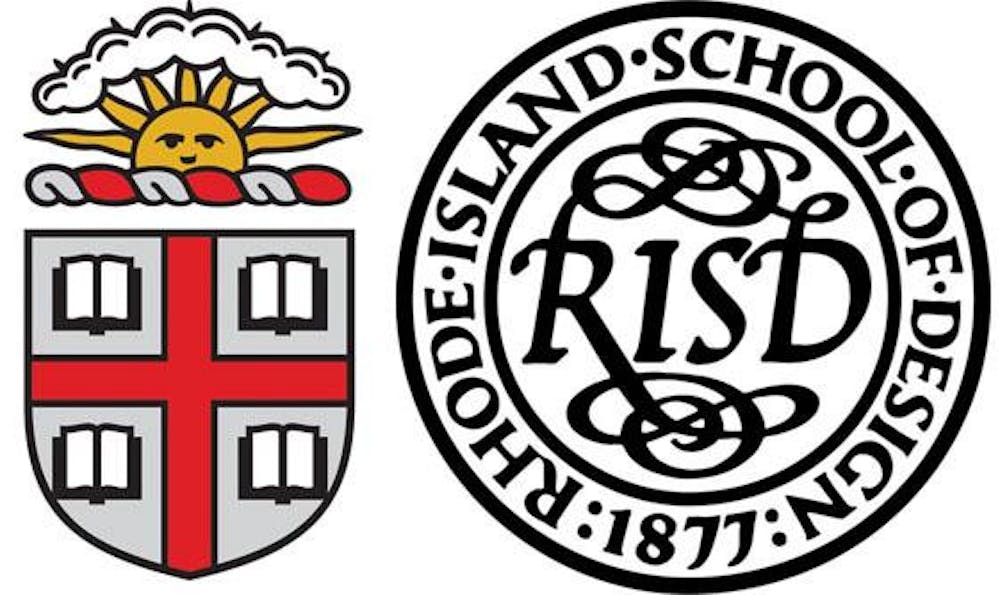The Brown/RISD Dual Degree Program welcomed its eleventh class of incoming students at the start of the month, which arrived on campus to a newly reformed program. In recent years, students, faculty and staff have worked to lower stress levels and foster diversity throughout the high-intensity program, which admitted a mere 15 students from a pool of over seven hundred this year.
Dual degree students are admitted to both the University and Rhode Island School of Design. They choose a concentration at the University and a major at RISD, ultimately receiving two degrees after five years. Adjusting course requirements was one step program administrators took to help students with the anxiety of scheduling classes at two different institutions.
“It’s hard to figure out what you want to do at one school … trying to navigate that (process) twice in the same program … is near impossible,” said Jake Ruggiero ’22, a third-year dual degree student concentrating in biology. “I think the dual degree (program) needs to do a better job at making that clearer to students — that the more direction you have coming in, the better off you’ll be.”
Scheduling courses “is still really a puzzle,” Michele Zager, the dual degree program’s assistant director and academic advisor, said.
In May 2018, the dual degree program made strides to relax its students’ RISD liberal arts requirements, which increased class options at the University. Before last year, students had to follow RISD’s distributive curriculum, which entailed selecting 10 courses in fields across literary arts, history, social science and philosophy at either institution. Today, dual degree students are no longer restricted to the fields in the distribution to complete the liberal arts RISD requirement. “This (change) is designed so that students can access the STEM curriculum a little bit more, and other students not in STEM can access a little bit more of the (Brown) open curriculum,” Zager said.
But “shopping period is not quite the same because certain classes are automatically ruled out,” Ruggiero said.
Zagar added that first-semester dual degree students “are limited to choosing first-year seminars that work within the RISD curriculum, which basically means they can’t meet more than twice a week.”
Students in the program are also required to present a capstone project at the end of their fifth year, which is intended to be the culmination of their interdisciplinary experience at both institutions. Since the beginning of last Wintersession, the dual degree program has offered an additional capstone-specific course for its incoming students to ensure that they have a scheduled time to work on these projects. This year, the program has also taken strides to foster diversity and provide resources for students of color.
“This year for the first time, we hired a minority peer counselor,” said Christopher Dennis, the deputy dean of the University and Brown’s co-chair of the dual degree program. The new minority peer advisor serves as a resource for students around issues of equity and inclusion. This initiative was proposed by dual degree students in last year’s “Sustained Dialogue” series, a bimonthly discourse between the Brown Center for Students of Color’s Assistant Director Olivia McNeill and dual degree students of color.
“Student advocacy and experience has always been really central to the changes that the program has made,” Zager said. Faculty members from both institutions and dual degree student representatives are part of a coordinating committee that proposes changes to the curriculum.
As a faculty member on the committee, Professor of Visual Arts and Chair of Visual Arts Leslie Bostrom said that she hopes to see more collaboration with the University’s VISA department and the dual degree program.
Dual degree students found orientation activities to be sometimes draining. “We’re all really tired … because we are required to do (all the orientation activities),” said Naya Chang ’24, a dual degree student. Orientation now includes more support for self-care to address some of the exhaustion. Before the respective orientation weeks of the University and RISD began, dual degree students participated in a separate orientation that involved intimate conversations with deans, faculty members and organizations relating to self-care, such as the Counseling and Psychological Services office, the Equity and Inclusion Department and the International Student Office.
“Having them talk to us directly makes us feel secure,” said Rui Ting (Tina) Guo ’24, a freshman dual degree student planning to concentrate in East Asian Studies at the University and Illustration at RISD.





